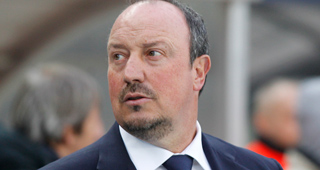If there was ever a season that Real Madrid flies under the radar, this would certainly be it. Granted, flying under the radar is relative and they will always be an international branding behemoth regardless of the players and manager that make up their roster. But 2015 is a changing the guard in literal terms - Rafa Benitez was hired to replace Carlo Ancelotti - and a spiritual transition with an aging Cristiano Ronaldo trading in YouTube reel stepovers for cold, hard goals. And with Gareth Bale and James Rodriguez’s progress stalled by injuries, Benitez has been forced to mix and match the club’s attacking youth around Ronaldo’s poaching.
Graham Hunter alluded to this when exploring the past 100 years of Real Madrid. He explains how Real Madrid’s vast history is built on three pillars: the superstars, their youth academy and blue collar role players to balance the side. Winning their tenth Champions League title two seasons ago required the game changing talents of Ronaldo and Angel Di Maria, but also the graft of Fabio Coentrao and Sami Khedira.
Benitez’s homecoming appeared to be an awkward fit on and off the field when first rumored. The rivalry between Jose Mourinho and Pep Guardiola turned El Classico into a morality play. Carlo Ancelotti dampened the tension, but sputtered at the end of last season. Charming has never been a term to describe Benitez. But he does recall a childhood watching Madrid matches inside the stadium. And not only does Benitez know Real Madrid, he is of Real Madrid - one of the lifers that power the club as described by Hunter.
In terms of entertainment, Benitez brings up the 104 goals that Napoli scored last season (his 2008/09 Liverpool runner-up side scored a league leading 77 goals). Roll out the numbers as he will, Benitez will never be synonymous with flowing movements of 30 passes leading to goals. And if the lasting image of Ancelotti and Mourinho’s Madrid were the pacey counter attacks, a soccer version of “7 seconds or less”, a mental image of what a Benitez team looks like is hard to conjure - unless that image is of waste hanging from a stick. True, his obsession with balance may be the most important trait of a successful team - but it is hardly the most marketable.
This also reveals Benitez more as tactical disciplinarian than tactical revolutionary. He’s played the same 4-2-3-1 formation for close to 15 years now, with attackers finding room between the lines and defenders closing that same space. The other Benitez trademark of zonal marking, a double pivot, and rotating players were forward thinking at the turn of the century with Valencia. He’s worked to perfect those areas as opposed to explore new tactical frontiers.
In the meantime, as Ronaldo transitions into the poacher phase of his career, the former Real Madrid youth academy coach will be relied upon to develop the next generation of stars in Bale, Rodriguez, Isco, Casemiro, Danilo, Jese, Raphael Varane and Lucas Vazquez. All of this while beating Barcelona, finding success in Champions League, and nimbly navigating through the backroom politics that come with the responsibility of managing Madrid.
So far, so good. Real Madrid stand top of the La Liga and their Champions League table. They have yet to lose a match this season. They’ve scored the most goals while giving up the least - an equation that will surely result to trophies. With so much attention paid to Barcelona’s trio replicating their feats from last season, and Bayern Munich and PSG’s continued spending sprees, consider Real Madrid a dark horse in Europe. Benitez has certainly accomplished much more with much less.
-------------------
Real Madrid were unplayable during a four month span from last September through January in which they won 22 consecutive matches in four competitions, including a 3-1 win against Barcelona. They scored 81 goals in that run, while only giving up 10. They weren’t just beating teams - they were over-running them completely. And there looked to be no end to the dominance.
With an athletic style relying on their overabundance of players in their early 20s, Ancelotti’s side played with a dynamism more fit for an IMAX theater. No side last season matched the height of Madrid’s play during that four month span. There were rumors that Ancelotti would stay as Madrid manager for years to come, but how things changed in a matter of months.
It was no coincidence that their first loss in 22 matches, against Valencia, came without Luka Modric in the side. Without Modric, Madrid become one dimensional, over-reliant on their superior individual quality. With Modric, Madrid can control and create chances against any defense in the world while still maintaining their frightening counter attacking play. He brings Real Madrid’s attack to life. Whereas midfield peer Xabi Alonso is defined by long diagonals, Modric is direct efficiency. His absence is the biggest shift in Bale’s goalscoring, and the perception of whether he can lead the club for the next decade.
Modric may be the most important player to a side competing in the Champions League. Benitez has made his career on stifling more talented opposition sides, but there must be a conductor to unlock the vast individual talents in their attack. Real Madrid are Modric’s team - and they have been for some time.



